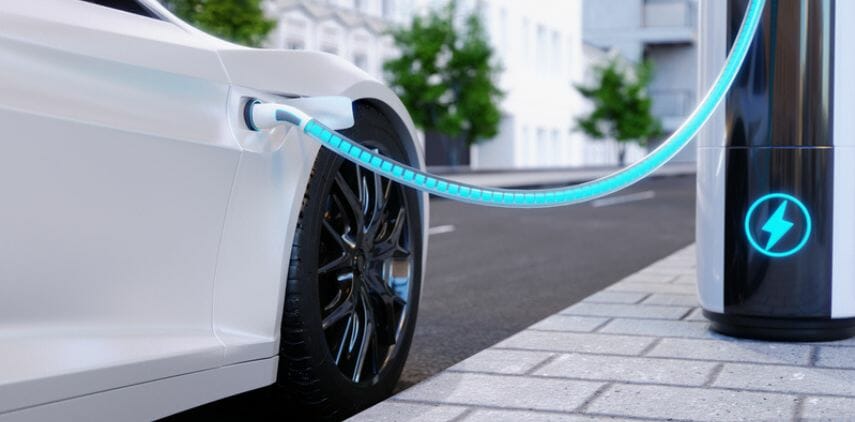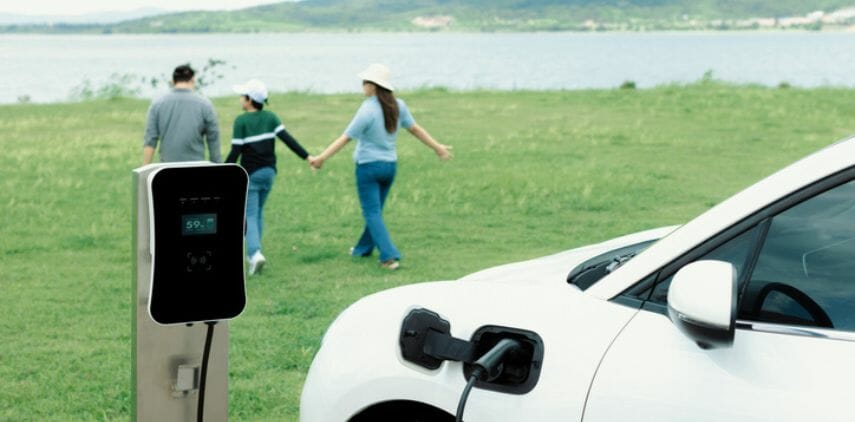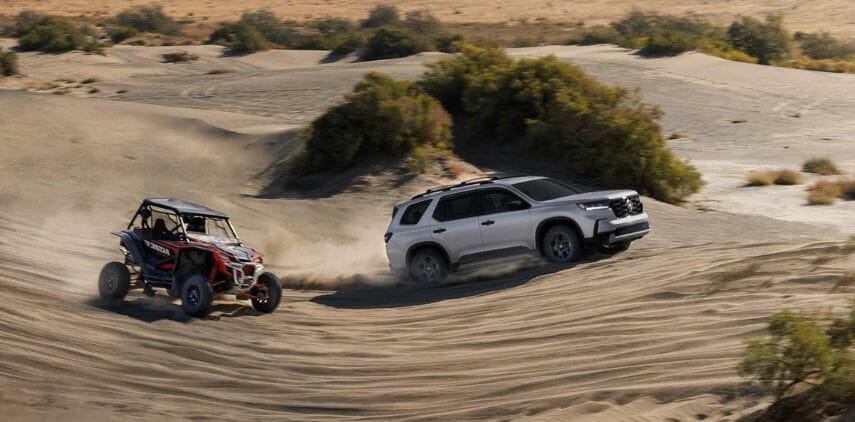Overview
Sport utility vehicles are more popular today than ever before. As a result, an ever-increasing number of vehicle manufacturers, such as Volvo and Toyota, have introduced new SUVs to their product lines, with most major manufacturers offering at least one model in each of the three primary SUV market segments: compact, mid-size, and full-size SUVs.
With many manufacturers expanding their SUV lines to include a wider variety of models, drivers in the market for an SUV are often faced with a difficult choice between a compact or full-size SUV.
Table of Contents
Understanding SUV Classes
Within the SUV market, vehicles are typically divided into three categories, primarily based on size. Within these categories, a few subcategories further segment the market.
Compact SUVs
Compact SUVs are the most popular segment of SUVs today. They are the smallest SUV type and sometimes use the frame of a car instead of a truck; this is the defining characteristic of a common compact SUV subclass, the compact crossover.
As a result of their car-like frames, these vehicles often look like slightly-larger station wagons. They are designed to offer the benefits of both an SUV and a sedan, though their reduced size makes most models unsuitable for off-roading or towing.
Compact SUVs, like the 2023 Honda HR-V, are typically less than 70 inches tall, less than 200 inches long, and less than 75 inches wide. However, there is some variation among models.
They typically don’t have a third row of seating but offer a fair amount of cargo space. Many compact SUVs – like the Honda HR-V – offer around 25 cubic feet of cargo space with the rear seats in their normal position, with that number typically doubling with the seats down.
Many compact SUVs, such as the 2022 Mitsubishi Outlander, use four-cylinder engines and front-wheel drive, which minimize performance capabilities. However, the smaller engine associated with compact SUVs also improves fuel economy over other SUV classes. The design of compact SUVs is often focused on ride quality, a comfortable cabin, and safety features.
Mid-size SUVs
Mid-size SUVs are another popular segment, especially among families. Slightly larger than their compact counterparts, mid-size SUVs are a middle ground between the small-yet-convenient compacts and the large-but-inefficient full-size SUVs.
From a size perspective, mid-size SUVs fall in the middle of the spectrum. They are easier to maneuver than large SUVs while maintaining some performance characteristics, like the ability to tow.
Depending on the model, they can offer two or three rows of seating. One of the differentiating factors between compact and mid-size SUVs is their level of ground clearance: mid-size SUVs position the driver higher and offer greater ground clearance, allowing some mid-size SUV models to handle off-roading.
Typically, mid-size SUVs offer better fuel economy ratings than full-size SUVs but comparable ratings to compact SUVs. For example, the 2023 Toyota Sequoia – a full-size SUV – offers a 22 miles per gallon combined fuel economy rating.
Compare this to the 2023 Toyota Corolla Cross, a compact crossover that delivers 32 miles per gallon. Many mid-size SUVs also offer between 20 and 30 feet of cargo room with the seats in standard configuration, though not nearly as much as full-size SUVs.
Full-size SUVs

Full-size SUVs are the largest SUV type and also the least common. Most full-size SUVs, such as the 2023 Chevrolet Suburban, are constructed using a truck frame. This makes them more similar to pickup trucks than passenger cars. They almost always offer a third row of seating positions, an elevated ride height, off-road capabilities, and ample cabin and cargo space.
From a fuel economy perspective, full-size SUVs are inefficient. Many models barely reach the combined fuel economy rating’s 20 miles per gallon threshold. This caused full-size SUVs to decline in popularity in the 2010s, though more recent models, such as the 2023 Cadillac XT6 and its 21/26 miles per gallon fuel economy rating, have improved their fuel economy.
Full-size SUVs are associated with the lowest passenger death rates of any passenger vehicle class, according to the Insurance Institute of Highway Safety, with drivers of small cars (the vehicle class with the worst death rate) more than five times as likely to die in an accident than drivers of large SUVs.
As a result, many manufacturers design full-size SUVs with ample safety features. Insurance coverage for full-size SUVs is typically more expensive than coverage for smaller SUVs, primarily due to the increased sticker price of larger models.
They can also tow large items, such as small boats and campers, usually with similar capabilities as trucks. As a result of their off-road capabilities, safety, and towing abilities, full-size SUVs are favored among outdoor enthusiasts and adventurous drivers.
How Do Full Size and Compact SUVs Differ?
While full-size and compact SUVs share many of the same characteristics, they also differ in several ways. Some of the most notable differences between compact and full-size SUVs include:
Size
The most notable difference between the two classes of SUVs is their size. Compact SUVs are the smallest SUV class, often of similar size to larger passenger cars. Full-size SUVs are the largest SUV class, often similar in size to pickup trucks.
This size difference is an important consideration when shopping for a vehicle. The extra room of a full-size SUV is ideal for families with several children or adventurous drivers who need to haul gear. On the other hand, compact SUVs are better suited as daily drivers for city dwellers.
Fuel Economy
Another major difference between compact and full-size SUVs is their fuel efficiency. Compact SUVs are considerably more efficient, with smaller engines and lower weights.
The larger full-size models are often quite inefficient due to their excess weight and larger engines. For example, the SUV with the best fuel economy rating for the 2023 model year is the compact 2023 Kia Sportage Hybrid, with a 43 miles per gallon combined fuel economy rating.
The SUV with the worst fuel economy for the 2023 model year is the full-size 2023 Cadillac Escalade, with a combined fuel economy rating of just 13 miles per gallon.
Hybrid and plug-in hybrid models are available in both classes for drivers who desire a more economical vehicle.
Engine Performance
Since full-size SUVs are larger than their compact counterparts, they also need larger, more powerful engines. Many full-size SUVs are equipped with eight-cylinder engines; as a result, some full-size SUVs have impressive acceleration and top-speed capabilities despite their size.
For example, the 2023 Lamborghini Urus’ 4.0-liter twin-turbo V8 is capable of going from 0 to 60 miles per hour in just 3.1 seconds.
Compact vehicles often perform worse (from an acceleration and top speed standpoint) than full-size SUVs, with smaller engines and more focus on fuel economy. However, some compact SUV models offer larger, six-cylinder engines, improving their performance dramatically. For example, the 2022 Acura MDX features a six-cylinder engine that can accelerate the vehicle from 0 to 60 miles per hour in 6.5 seconds.
Handling
One huge advantage compact SUVs present over full-size models is their handling capabilities. Since the chassis of compact SUVs is considerably smaller than a full-size chassis, compact SUVs are capable of navigating tighter spaces, like those found in many cities.
The increased height of full-size SUVs can also pose a problem for handling. When a full-size SUV encounters a crosswind, its increased surface area can cause them to be blown about the road during gusts. Compact SUVs typically offer a car-like driving experience, while full-size SUVs offer a truck-like driving experience.
Off-Road Capabilities
Full-size SUVs are much more well-equipped to handle the rigors of off-roading than compact SUVs. Since they are built using a truck frame, many full-size SUVs are equally capable of traversing difficult terrain and completing off-roading trips as pickup trucks.
Many full-size SUV models even offer trim levels catered towards off-road demands, such as trim levels that provide a choice between AWD, FWD, or RWD. This makes them a prime choice for off-road or outdoor enthusiasts. Unlike full-size SUVs, compact SUVs are often incapable of off-roading.
Towing Abilities
Like off-roading, towing is another area where full-size SUVs stand out. Many full-size SUVs are capable of towing large loads: campers, jet skis, and other loads are easily hauled by most full-size models. Their improved engine performance and truck frame allow drivers to haul similar loads with full-size SUVs as trucks are capable of hauling. Compact SUVs are not intended to tow, with most models forgoing a tow hitch.
Safety
Both compact and full-size SUVs are among the safest vehicles on the roadway; however, full-size SUVs hold a slight edge, largely due to their increased size.
In 2020, the Insurance Institute for Highway Safety released data showing that larger vehicles are associated with a decreased rate of fatal accidents. Across all vehicle segments, full-size SUVs were associated with the lowest overall death rate, with 15 fatalities per million registered vehicle years.
Across the set, the data indicated that driver death rates decreased as the vehicles got larger. Compact SUVs can be quite safe, and many manufacturers have begun to roll out several standard safety features, such as driver assistance technology, that cut down on accident occurrences.
Cabin Size and Cargo Space
When it comes to cabin size and cargo space, full-size SUVs hold a sizable advantage. Since full-size SUVs include a third row, they can facilitate the seating of seven or eight passengers. Compact SUVs almost always forgo a third row of seating, capping their capacity at five. The increased cabin size associated with full-size SUVs also provides a more comfortable and luxurious ride.
Most full-size SUV models allow drivers to fold down the rear row of seats to further improve cargo storage capacity, something that cannot be performed with compact SUVs.

Find Your Perfect SUV with SUViews
SUViews’ insider reviews can help you find the best model for you. Our SUV experts go in-depth on each SUV model, so you can make an informed decision on your next vehicle purchase.
Check out our reviews and recommendations to see which SUVs are getting rave reviews from our industry experts, and read our blogs to learn more about SUV-related topics like maintenance and car insurance. Whatever you need to know, you can find the answer at SUViews.






